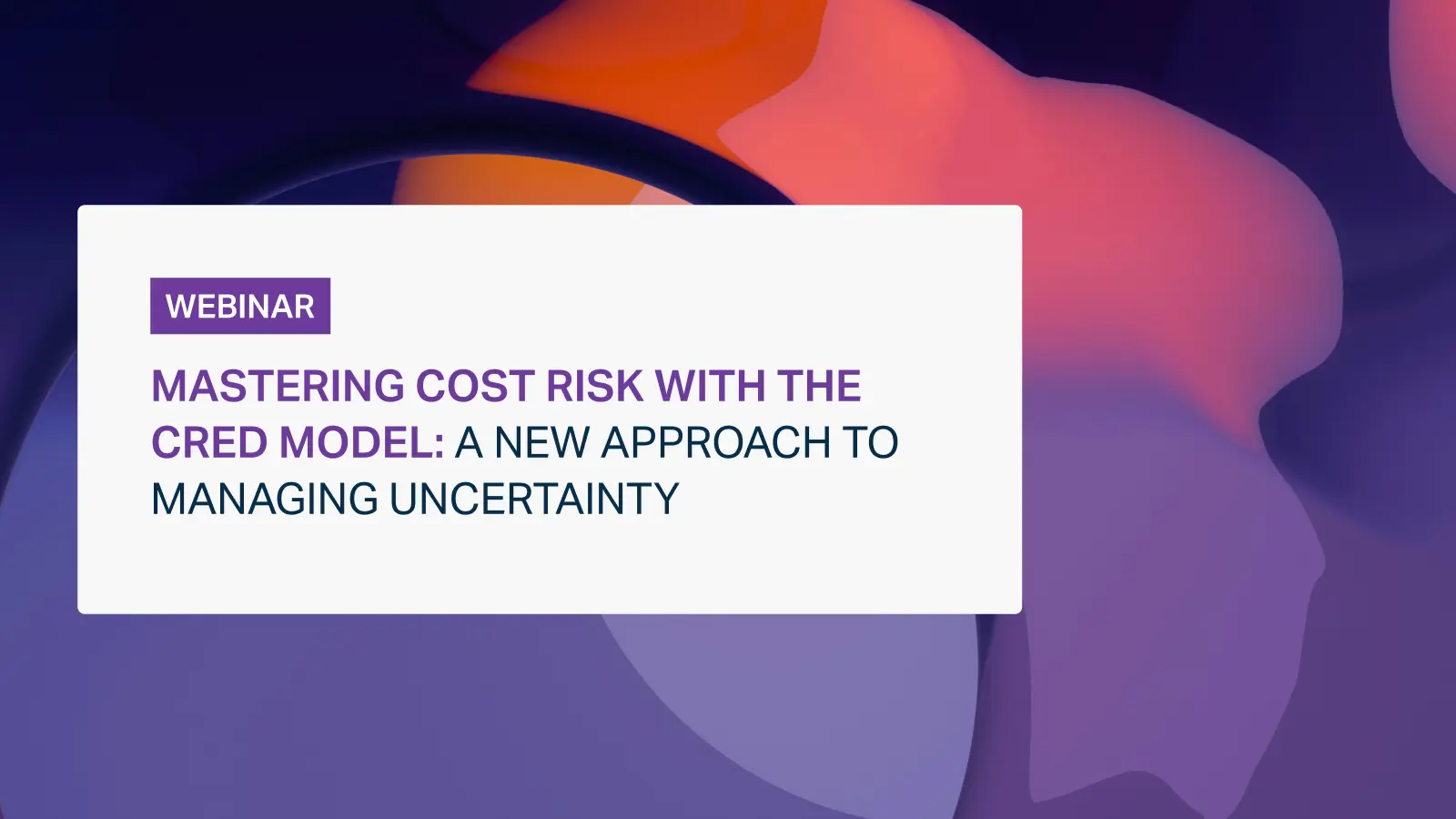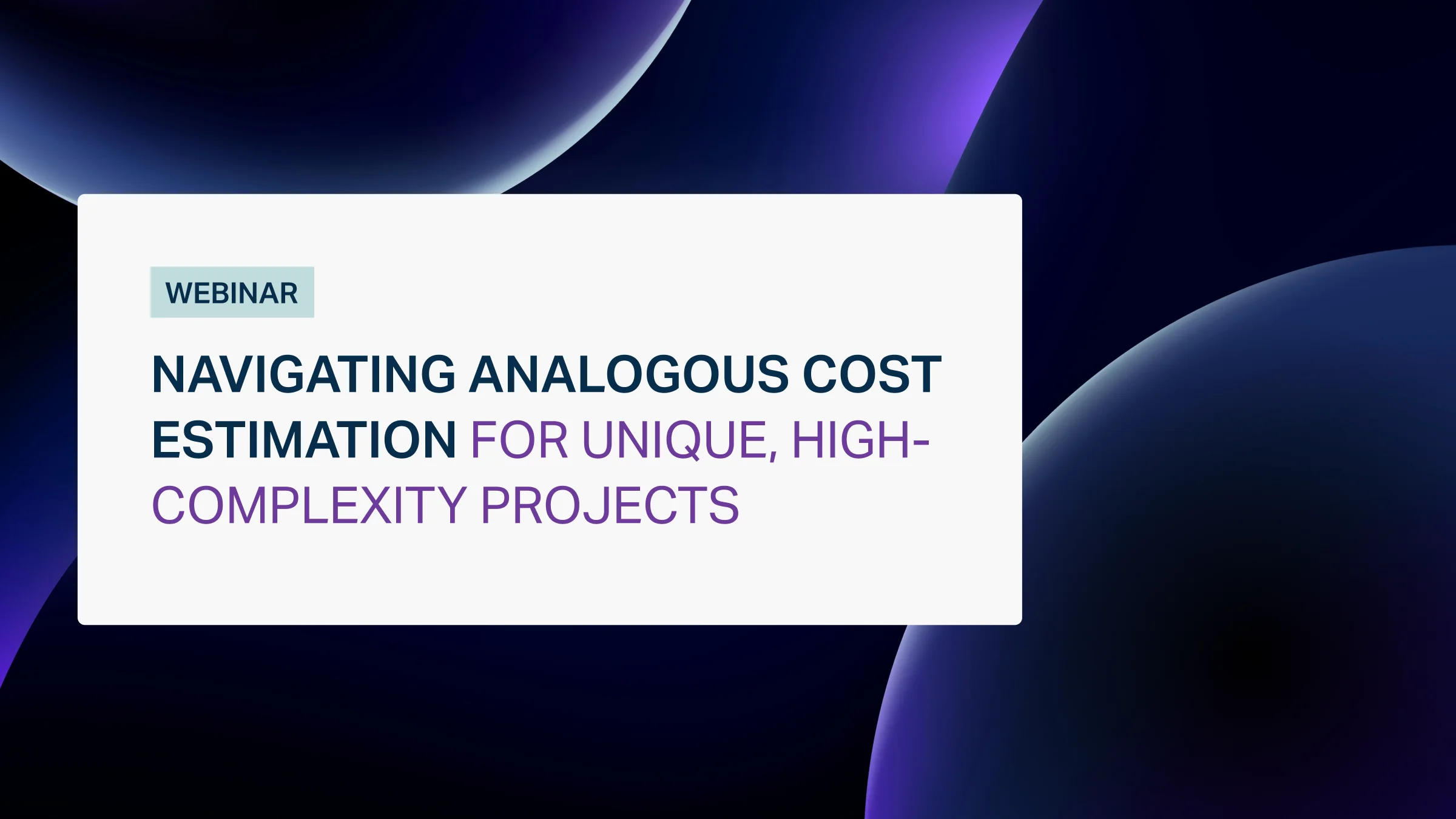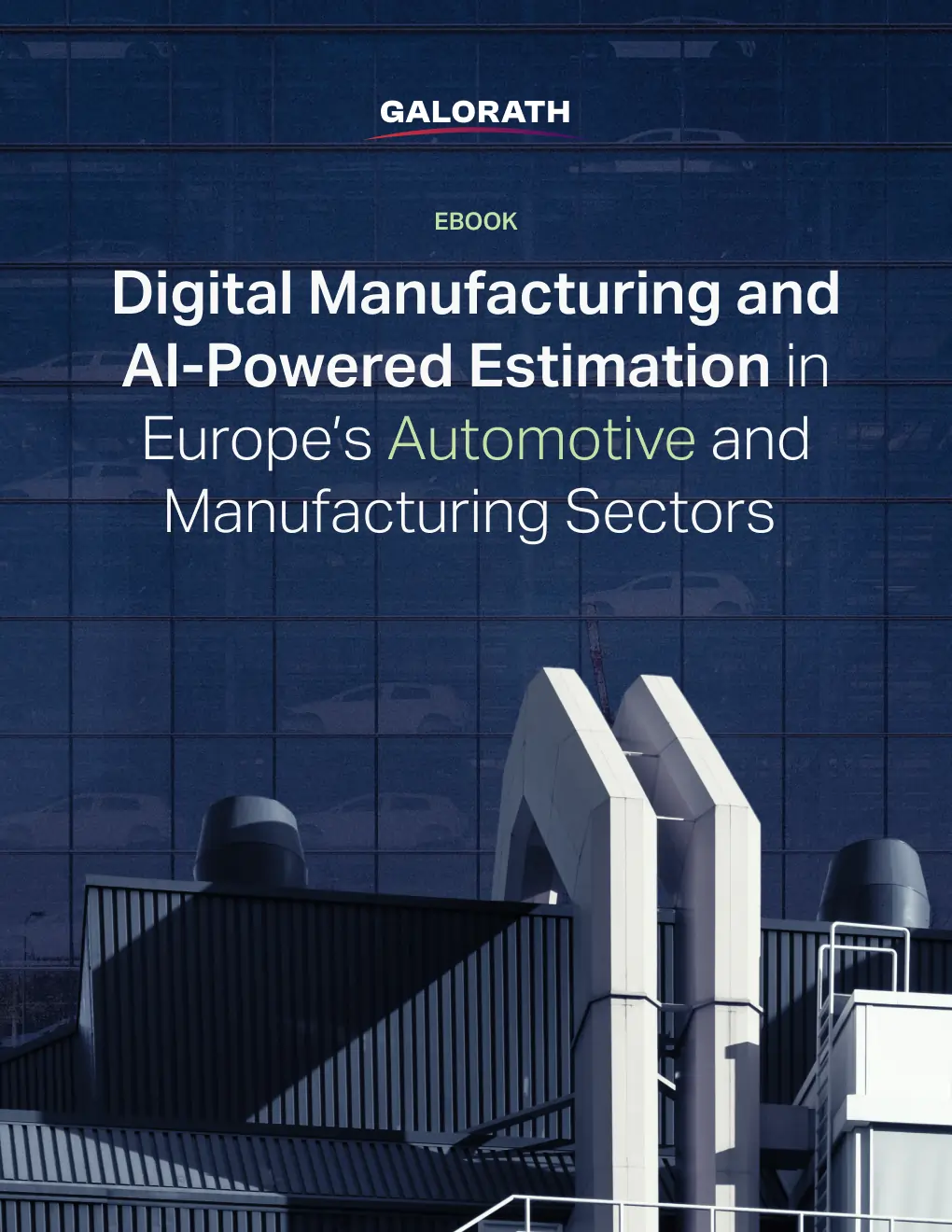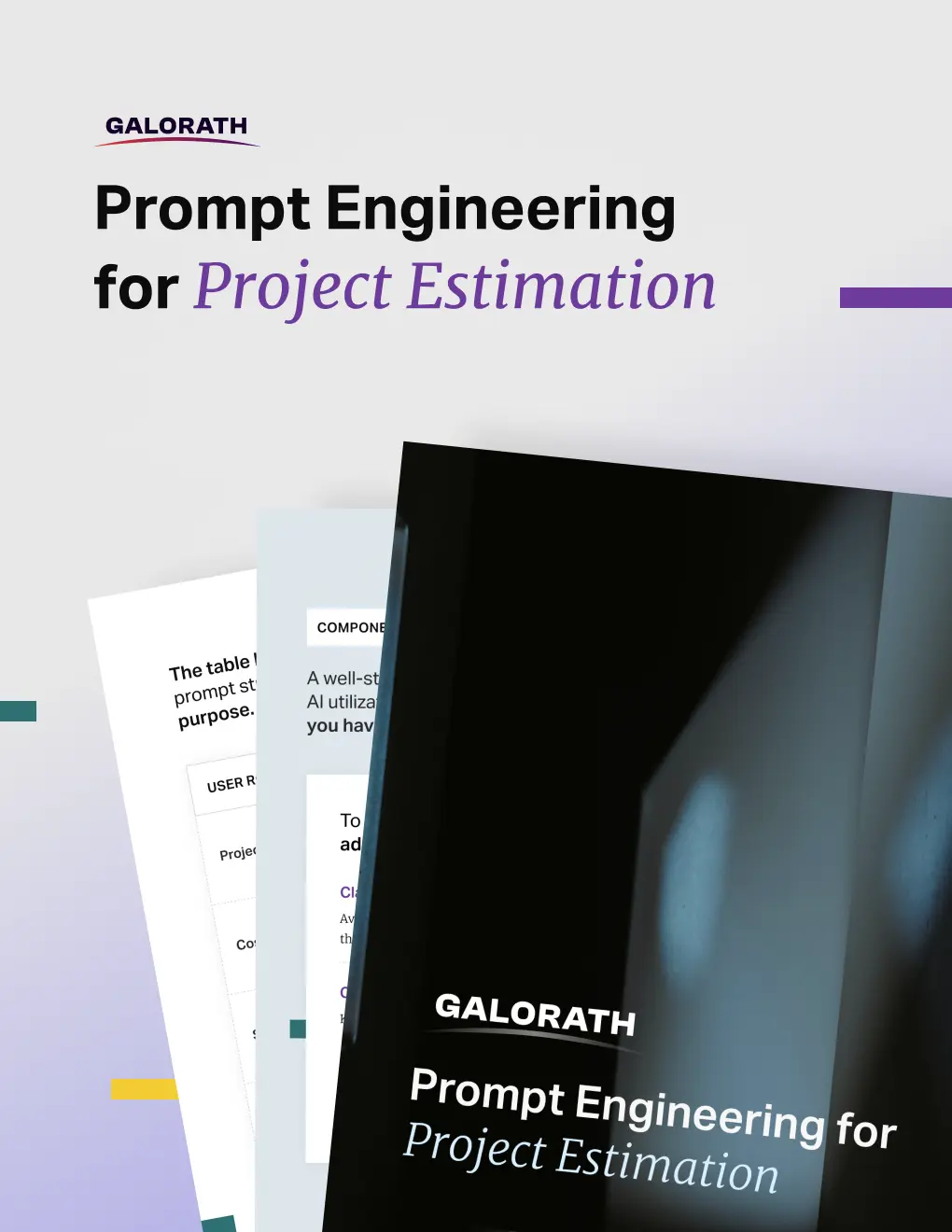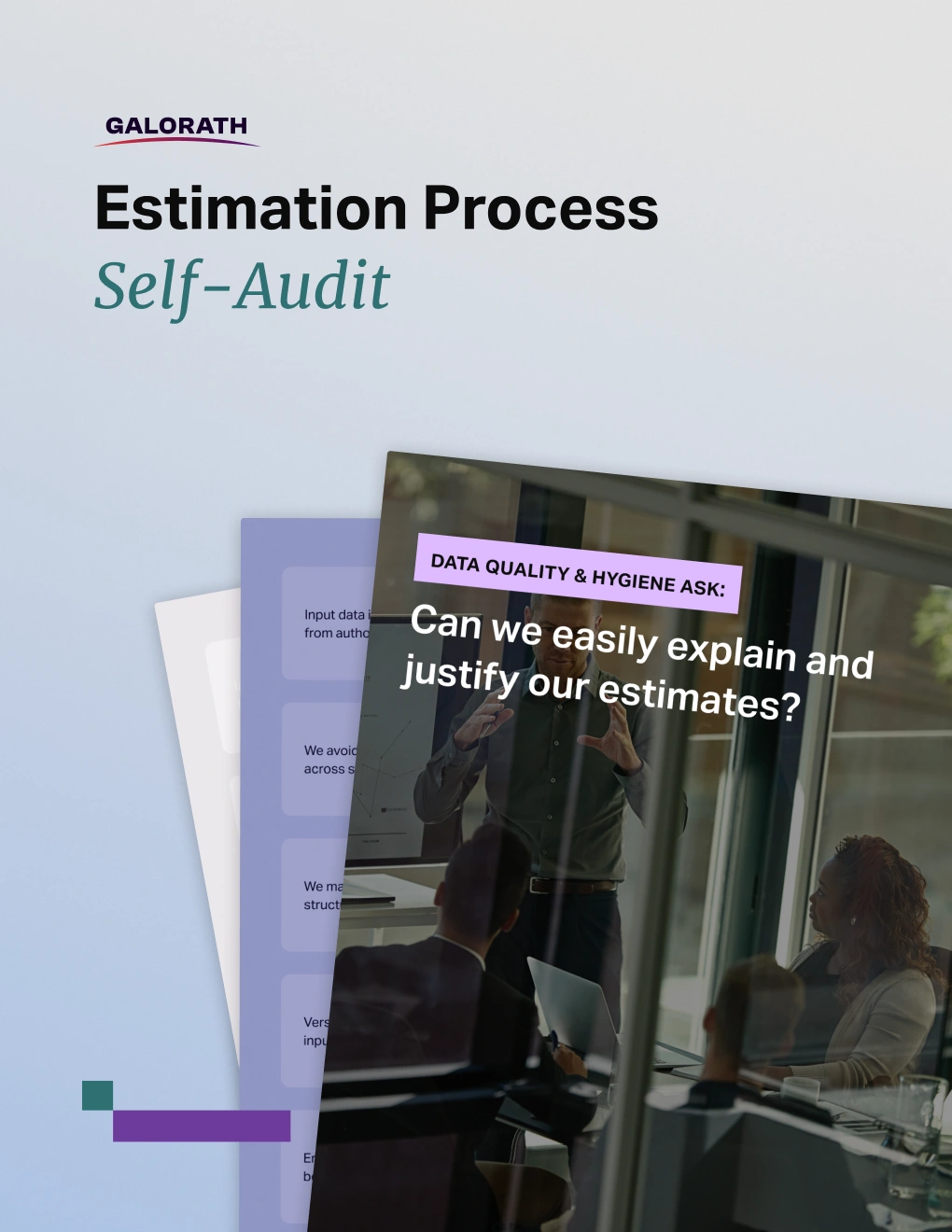Mastering Cost Risk with the CRED Model: A New Approach to Managing Uncertainty
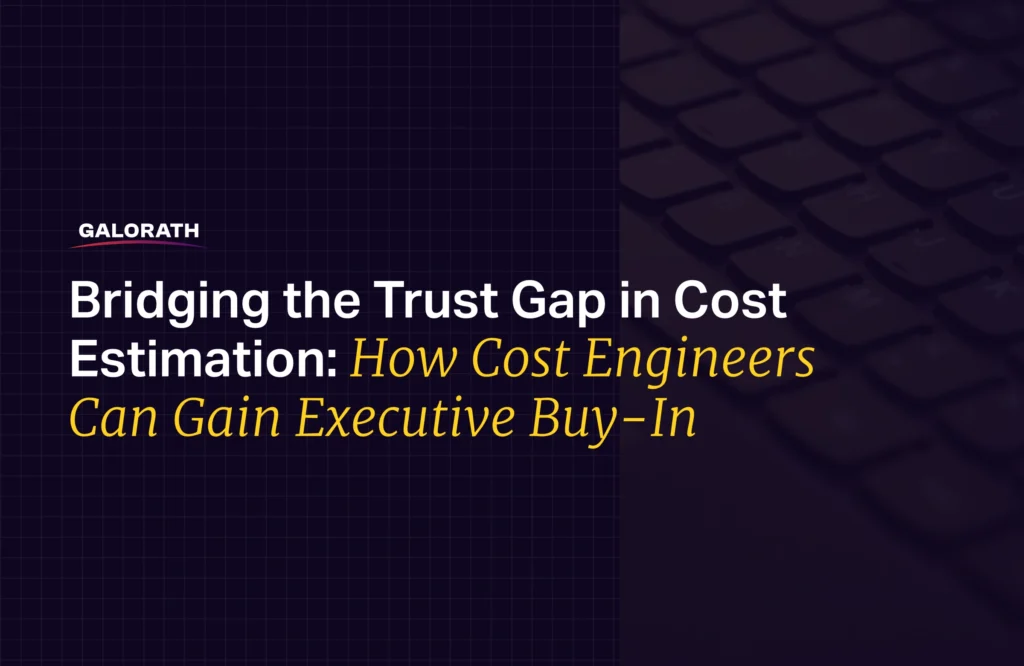
Table of Contents
Cost engineers and estimators often feel like their expertise is ignored. Hours of work go into building models, running scenarios, and validating assumptions, only for leadership to slash the numbers, ignore the findings, or substitute their own “price-to-win” figures. The result is that careful analysis built on historical data, parametric models, and risk scenarios is overshadowed by more optimistic numbers that align with business development goals. As highlighted in Galorath’s 2025 Industry Report on Cost, Schedule, and Risk, this disconnect is one of the biggest barriers to delivering projects on time and on budget.
At its core, the issue is not just technical. It’s cultural, organizational, and strategic.
Executives often view estimates as obstacles that slow down decision-making rather than as intelligence that protects margins and reduces risk. For cost engineers, this creates a constant uphill battle where your analysis is undervalued at the exact moment it is most needed. If executives don’t trust the estimates they are given, they won’t use them as inputs for high-stakes decision making. And if estimators don’t feel respected and heard, they are less likely to provide the level of strategic insight that leadership needs to manage uncertainty.
This dynamic erodes confidence across the enterprise. Project teams begin execution without a defensible baseline. Program managers are left reconciling optimistic promises with harsh realities. Finance leaders are forced to explain overruns that could have been predicted. The cycle repeats itself, damaging both customer satisfaction and organizational reputation.
Closing this trust gap is not easy, but it is possible. For cost engineers, the goal is not just technical accuracy. It is learning how to present, communicate, and integrate estimates so that executives recognize their value. When cost, schedule, and risk intelligence is framed as a forward-looking decision tool rather than a backward-looking constraint, executives are more likely to listen. And when leadership demonstrates that estimation is valued at the highest levels, estimators can step into the role of trusted advisors who help organizations navigate volatility with confidence.
Why Executives Dismiss Estimates
The 2025 Industry Report on Cost, Schedule, and Risk revealed several reasons why estimates are often misunderstood at the leadership level.
1. Estimates and targets are confused.
An estimate is an independent assessment of what a project will cost or how long it will take. A target is what the organization hopes to spend or the schedule it wants to meet. Executives often treat them as the same thing, which creates a cycle of unrealistic expectations.
2. Market forces drive “price-to-win” behavior.
Leaders sometimes adjust estimates to meet competitive pricing or revenue goals. This may win contracts, but it undermines confidence in the original work and sets up programs for cost overruns.
3. The feedback loop is broken.
Few organizations consistently collect, normalize, and apply actuals back into their models. Without historical calibration, executives see estimates as guesswork rather than as grounded analysis.
4. Communication gets distorted.
As findings move up the chain, messages are often softened or reshaped. This message distortion creates a cultural drift, where executives hear what they want rather than what they need.
The result is predictable. Estimates are undervalued, executives make decisions without reliable guardrails, and projects suffer.
Adapting to Executive Optics
Closing the trust gap requires more than technical accuracy. Cost engineers need to adapt their approach so that executives see their work as essential to business outcomes.
1. Provide ranges, not points.
Executives know uncertainty exists, but they are often handed a single number. By framing estimates as ranges with probabilistic distributions, estimators communicate risk in a way that leadership can act on. A range tells the truth: projects have best cases, worst cases, and likely outcomes.
2. Benchmark relentlessly.
Every estimate should come with context. Comparing results against similar projects, industry benchmarks, or organizational history adds pedigree. When leaders see that an estimate aligns with proven outcomes, it carries more weight.
3. Keep estimates alive.
Too often, an estimate is treated as a one-time deliverable. Instead, estimates should be living models updated as scope, supply chains, or risks change. This continuous relevance transforms them from baseline documents into strategic tools.
4. Translate into executive language.
Executives care about profitability, risk exposure, and customer satisfaction. When you tie your findings directly to those outcomes, your work becomes harder to ignore. For example, instead of saying “this project could cost $30 million,” frame it as “at this level of risk, margins fall below our target threshold, and customer delivery could slip by six months.”
5. Leverage technology to build transparency.
Executives are more likely to trust what they understand. AI-powered estimation and integrated tools can make assumptions clear, provide real-time updates, and reduce the perception that models are “black boxes.”
Changing the Culture
Even with better communication, cultural barriers remain. Estimates are often treated as secondary to design, engineering, or business development. For cost engineers, shifting that perception is a critical part of the role.
Elevate cost as a design parameter.
The 2025 Industry Report on Cost, Schedule, and Risk found that reinforcing that costs should be treated as a technical parameter alongside performance and quality could help garner more reliable estimates. Decisions made early in design lock in the majority of lifecycle costs. If cost engineers are not at the table at that time, their influence is diminished.
Secure leadership sponsorship by showing value.
Leaders are more likely to support capabilities that clearly reduce risk exposure and protect profitability. By highlighting how your analysis drives outcomes, you improve the chances of earning executive backing.
Close the loop with actuals.
Executives often overlook the value of comparing estimates to real outcomes, but without this discipline, estimates risk being ignored. Tracking actuals and reconciling discrepancies shows how estimation ties directly to performance, margins, and delivery timelines. When you demonstrate that lessons learned improve future accuracy, you give leadership a clear reason to care about the process.
Integrate across functions.
Cost engineers need to work alongside program managers, engineers, finance teams, and procurement. The more visible and embedded estimation is, the harder it is for leadership to treat it as a back-office task.
How to Win Executive Buy-In
For cost engineers who want their work taken seriously at the highest levels, four practices make the difference:
- Frame costs as technical parameters. Help executives see cost, schedule, and risk as design constraints just like performance and quality. Translate estimates into the same technical language they already respect.
- Present ranges with context. Deliver estimates as ranges supported by benchmarks, not single-point numbers. When you connect results to proven outcomes and similar programs, leaders have fewer reasons to dismiss your findings.
- Keep models active. Treat your estimates as living documents. Update them as scope, supply chain, and risk conditions shift. Executives trust what remains relevant to today’s decision, not last quarter’s.
- Show the business impact. Frame results in terms of margins, delivery dates, and customer satisfaction. Connecting your work directly to outcomes executives care about increases its influence.
What You Can Do to Influence Leadership
If you want your estimates to drive decision-making instead of being sidelined, focus on building visibility and credibility.
- Secure leadership sponsorship by showing value. Demonstrate how your analysis reduces risk exposure and protects profitability. Executives back capabilities that clearly affect outcomes.
- Close the loop with actuals. Collect and present historical comparisons so you can prove when estimates were accurate and where adjustments improved future results. Executives respect evidence-based improvement.
- Integrate across functions. Embed estimation alongside program management, engineering, finance, and procurement. The more visible and collaborative you are, the harder it is for leadership to treat estimation as back-office work.
- Elevate your role from reporter to advisor. Position yourself not as someone who delivers numbers but as someone who equips decision-makers with foresight. Executives listen when they see you as a strategic partner.
From Back Office to Boardroom
Perhaps the most important shift is mindset. Estimation is not paperwork. It is not a bureaucratic hurdle to clear before funding a project. It is a strategic enabler of decision-making.
Executives are operating in a world of constant volatility. Supply chains shift overnight. Regulatory requirements expand. Technology evolves faster than adoption cycles. In today’s environment, leaders need more than intuition. They need defensible, data-backed intelligence to guide decisions.
That is what estimation provides when it is taken seriously. It links innovation to execution, ambition to feasibility, and risk to opportunity.
For cost engineers, the challenge is not only producing accurate estimates. It is making sure those estimates are heard, respected, and used. The ability to bridge that trust gap is what transforms estimation from a back-office task into a boardroom advantage.
10 Step Estimation Process Sample Checklist
View our 10 Step Estimating Process Checklist. This checklist should be tuned to the individual company’s needs and suggestions.
Estimating Total Cost of Ownership (TCO)
Find out how you can use Total Cost of Ownership (TCO) model to create an estimate which includes all the costs generated over the useful life of a given application.
Should Cost Analysis
Learn how Should-Cost Analysis can identify savings opportunities and drive cost efficiency in procurement and manufacturing processes.
ROM Estimate: The First Step Towards a Detailed Project Plan
Find out what ROM (rough order of magnitude) estimate is and why is it a crucial element of every project planning cycle.
Software Maintenance Cost
Find out why accurate estimation of software maintenance costs is critical to proper project management, and how it can make up to roughly 75% of the TCO.
